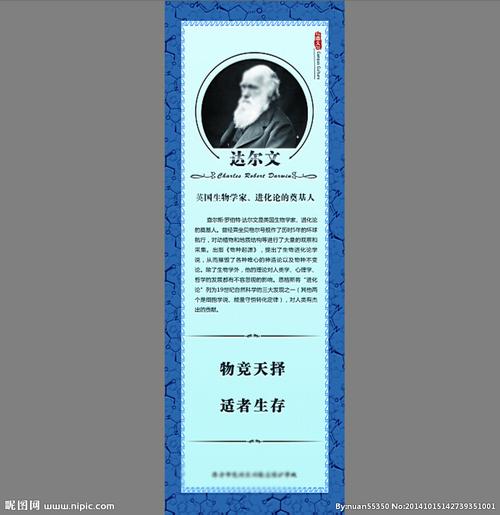
AdvancesandChallengesinSuper-Resolution
SinaFarsiu,
1121
DirkRobinson,MichaelElad,PeymanMilanfar
1
2
ElectricalEngineeringDepartment,UniversityofCalifornia,SantaCruzCA95064
ComputerScienceDepartment,TheTechnion–IsraelInstituteofTechnology,Israel
Received30January2004;accepted15March2004
ABSTRACT:Super-Resolutionreconstructionproducesoneorat
ofhigh-resolutionimagesfromaquenceoflow-resolutionframes.
ThisarticlereviewsavarietyofSuper-Resolutionmethodspropod
inthelast20years,andprovidessomeinsightinto,andasummary
of,ourrecentcontributionstothegeneralSuper-Resolutionproblem.
Intheprocess,adetailedstudyofveralveryimportantaspectsof
Super-Resolution,oftenignoredintheliterature,isprented.Spe-
cifically,wediscussrobustness,treatmentofcolor,anddynamic
operationmodes.Novelmethodsforaddressingtheissuesare
accompaniedbyexperimentalresultsonsimulatedandrealdata.
Finally,somefuturechallengesinSuper-Resolutionareoutlinedand
discusd.
©2004WileyPeriodicals,Inc.IntJImagingSystTechnol,14,
47–57,2004;PublishedonlineinWileyInterScience(.
com).DOI10.1002/ima.20007
Keywords:Super-Resolution;demosaicing;inverproblem;dy-
namicSuper-Resolution;image-reconstruction;robustestimation;
robustregularization
I.INTRODUCTION
Onthequesttoachievehighresolutionimagingsystems,one
quicklyrunsintotheproblemofdiminishingreturns.Specifically,
theimagingchipsandopticalcomponentsnecessarytocapturevery
high-resolutionimagesbecomeprohibitivelyexpensive,costingin
themillionsofdollarsforscientificapplications(Parulskietal.,
1992).Super-resolutionisthetermgenerallyappliedtotheproblem
oftranscendingthelimitationsofopticalimagingsystemsthrough
theuofimageprocessingalgorithms,whichpresumablyare
relativelyinexpensivetoimplement.Theapplicationofsuchalgo-
rithmswillcertainlycontinuetoproliferateinanysituationwhere
high-qualityopticalimagingsystemscannotbeincorporatedorare
tooexpensivetoutilize.
ThebasicideabehindSuper-Resolutionisthefusionofa-
quenceoflow-resolutionnoisyblurredimagestoproduceahigher-
resolutionimageorquence.EarlyworksonSuper-Resolution
showedthatthealiasingeffectsinthehigh-resolutionfudimage
Correspondenceto:S.Farsiu;e-mail:farsiu@
Grantsponsor:ThisworkwassupportedinpartbytheNationalScienceFounda-
tionGrantCCR-9984246,USAirForceGrantF49620-03-1-0387,andbytheNational
ScienceFoundationScienceandTechnologyCenterforAdaptiveOptics,managedby
theUniversityofCaliforniaatSantaCruzunderCooperativeAgreementNo.AST-
9876783.
©2004WileyPeriodicals,Inc.
canbereduced(orevencompletelyremoved),ifarelativesub-pixel
motionexitsbetweentheundersampledinputimages(Huangand
Tsai,1984).However,contrarytothenaivefrequencydomain
descriptionofthisearlywork,weshallethat,ingeneral,super-
resolutionisacomputationallycomplexandnumericallyill-pod
problem.AllthismakesSuper-Resolutiononeofthemostappealing
rearchareasforimageprocessingrearchers.
Althoughveralarticleshavesurveyedthedifferentclassical
Super-Resolutionmethodsandcomparedtheirperformances(e.g.,
BormanandStevenson,1998;KangandChaudhuri,2003),the
intentionofthisarticleistopinpointthevariousdifficultiesinherent
totheSuper-Resolutionproblemforavarietyofapplicationttings
oftenignoredinthepast.Wereviewmanyofthemostrecentand
popularmethods,andoutlinesomeofourrecentworkaddressing
theissues.
Theorganizationofthisarticleisasfollows.InSectionIIwe
studySuper-Resolutionasaninverproblemandaddressrelated
regularizationissues.InSectionIIIweanalyzeageneralmodelfor
imagingsystemsapplicabletovariousscenariosofSuper-Resolu-
tion.InSectionIVwedescribethreedifferentapplicationttings
andourapproachestodealingwiththem.Specifically,weaddress
theproblemofrobustSuper-Resolution,thetreatmentofcolor
imagesandmosaicedsources,anddynamicSuper-Resolution.Fi-
nally,weconcludewithalistofchallengestobeaddresdinfuture
workonSuper-Resolution.
II.SUPER-RESOLUTIONASANINVERSEPROBLEM
Super-resolutionalgorithmsattempttoextractthehigh-resolution
imagecorruptedbythelimitationsoftheopticalimagingsystem.
Thistypeofproblemisanexampleofaninverproblem,wherein
thesourceofinformation(high-resolutionimage)isestimatedfrom
theobrveddata(low-resolutionimageorimages).Solvingan
inverproblemingeneralrequiresfirstconstructingaforward
model.Byfar,themostcommonforwardmodelfortheproblemof
Super-Resolutionislinearinform:
Y͑t͒ϭM͑t͒X͑t͒ϩV͑t͒,(1)
whereYisthemeasureddata(singleorcollectionofimages),M
reprentstheimagingsystem,Xistheunknownhigh-resolution
imageorimages,Vistherandomnoiinherenttoanyimaging
system,andtreprentsthetimeofimageacquisition.Weuthe(X)ϭʈTXʈ
underscorenotationsuchasXtoindicateavector.Inthisformula-
tion,theimageisreprentedinvectorformbyscanningthe2D
imageinarasteroranyotherscanningformatregularizationhasbeenmotivatedfromananalyticstandpointto
1
to1D.
Armedwithaforwardmodel,thepractitionerofSuper-Resolu-
tionmustexplicitlyorimplicitly[e.g.thePOCS-badmethodsof
Pattietal.(1997)]defineacostfunctiontoestimateX(fornowweprovablyuniqueandstablesolution.Often,however,littleattention
ignorethetemporalaspectofSuper-Resolution).Thistypeofcost
functionassuresacertainfidelityorclonessofthefinalsolutionto
themeasureddata.Historically,theconstructionofsuchacost
functionhasbeenmotivatedfromeitheranalgebraicorastatistical
perspective.Perhapsthecostfunctionmostcommontobothper-
spectivesistheleast-squares(LS)costfunction,whichminimizes
theL
2
normoftheresidualvector,
X
ˆ
ϭargmin
J͑X͒ϭargmin.(2)
ʈYϪMXʈ
2
2
XX
ForthecawherethenoiVisadditivewhite,zeromeanGauss-
ian,thisapproachhastheinterpretationofprovidingthemaximum
likelihoodestimateofX(EladandFeuer,1997).Weshallshowin
thispaperthatsuchacostfunctionisnotnecessarilyadequatefor
Super-Resolution.
Aninherentdifficultywithinverproblemsisthechallengeof
invertingtheforwardmodelwithoutamplifyingtheeffectofnoi
inthemeasureddata.Inthelinearmodel,thisresultsfromthevery
high,possiblyinfinite,conditionnumberforthemodelmatrixM.
Solvingtheinverproblem,asthenamesuggests,requiresinvert-
ingtheeffectsofthesystemmatrixM.Atbest,thissystemmatrix
isillconditioned,prentingthechallengeofinvertingthematrixin
anumericallystablefashion(GolubandLoan,1994).Furthermore,
findingtheminimizerof(2)wouldamplifytherandomnoiVin
thedirectionofthesingularvectors(intheSuper-Resolutionca
thearethehighspatialfrequencies),makingthesolutionhighly
nsitivetomeasurementnoi.Inmanyrealscenarios,theproblem
iswornedbythefactthatthesystemmatrixMissingular.Fora
singularmodelmatrixM,thereisaninfinitespaceofsolutions
minimizing(2).Thus,fortheproblemofSuper-Resolution,some
formofregularizationmustbeincludedinthecostfunctionto
stabilizetheproblemorconstrainthespaceofsolutions.
Traditionally,regularizationhasbeendescribedfromboththe
algebraicandstatisticalperspectives.Inbothcas,regularization
takestheformofconstraintsonthespaceofpossiblesolutionsoften
independentofthemeasureddata.Thisisaccomplishedbywayof
Lagrangiantypepenaltytermsasin
J͑X͒ϭʈYϪMXʈ
2
2
ϩ͑X͒.(3)
Thefunction(X)posapenaltyontheunknownXtodirectitto
abetterformedsolution.Thecoefficientdictatesthestrengthwith
whichthispenaltyisenforced.Generallyspeaking,choosing
couldbeeitherdonemanually,usingvisualinspection,orautomat-
icallyusingmethodslikegeneralizedcross-validation(Lukas,1993;
Nguyenetal.,2001a)L-curve(HannandO’Leary,1993)and
othertechniques.
1atm
Notethatthisconversionismanticandbearsnolossinthedescriptionoftheisusuallyignoredintheliterature(Farsiu
relationbetweenmeasurementsandidealsignal.etal.,2004a).
48Vol.14,47–57(2004)
Tikhonovregularization,oftheform
2
2
,isawidely
employedformofregularization,whereTisamatrixcapturingsome
aspectoftheimagesuchasitsgeneralsmoothness.Thisformof
justifycertainmathematicalpropertiesoftheestimatedsolution.For
instance,aminimalenergyregularization(TϭI)easilyleadstoa
isgiventotheeffectsofsuchsimpleregularizationonthesuper-
resolutionresults.Forinstance,theregularizationoftenpenalizes
energyinthehigherfrequenciesofthesolution,optingforasmooth
andhenceblurrysolution.Fromastatisticalperspective,regulariza-
tionisincorporatedasaprioriknowledgeaboutthesolution.Thus,
usingthemaximuma-posteriori(MAP)estimator,amuchricher
classofregularizationfunctionsemerges,enablingustocapturethe
specificsoftheparticularapplication[e.g.,SchultzandStevenson
(1996)capturedthepiecewi-constantpropertyofnaturalimages
bymodelingthemasHuber-Markovrandomfielddata].
UnlikethetraditionalTikhonovpenaltyterms,robustmethods
arecapableofperformingadaptivesmoothingbadonthelocal
structureoftheimage.Forinstance,inSectionIV.Aweoffera
penaltytermcapableofprervingthehigh-frequencyedgestruc-
turescommonlyfoundinimages.Theedge-prervingpropertyof
thismethodhasbeenextensivelystudied(Elad,2002;Farsiuetal.,
2004a;Rudinetal.,1992;Sochenetal.,1998).
Inrecentyearstherehasalsobeenagrowingnumberoflearn-
ing-badMAPmethods,wheretheregularization-likepenalty
termsarederivedfromcollectionsoftrainingsamples(Atkinsetal.,
1999;BakerandKanade,2002;HaberandTenorio,2003;Zhuand
Muford,1997).Forexample,inBakerandKanade(2003)anex-
plicitrelationshipbetweenlow-resolutionimagesoffacesandtheir
knownhigh-resolutionimageislearnedfromafacedataba.This
learnedinformationislaterudinreconstructingfaceimagesfrom
low-resolutionimages.Becauoftheneedtogatheravastamount
ofexamples,oftenthemethodsareeffectivewhenappliedtovery
specificscenarios,suchasfacesortext.
Needlesstosay,thechoiceofregularizationplaysavitalrolein
theperformanceofanySuper-Resolutionalgorithm.
III.ANALYSISOFTHEFORWARDMODEL
A.GeneralStructureoftheLinearModel.Inthisction,
wefocusontheconstructionofthemodelmatrixM.Specifically,
weexploretheeffectsofvariousmodelingassumptionsrelating
tothecomputationalefficiencyandperformanceofSuper-Reso-
lutionalgorithms.Primarily,thethreetermsnecessarytocapture
theimageformationprocessareimagemotion,opticalblur,and
thesamplingprocess.Thethreetermscanbemodelledas
paratematricesby
MϭDAHF,(4)
whereFreprentstheintensityconrving,geometricwarpoper-
ationcapturingimagemotion,Histheblurringoperationduetothe
opticalpointspreadfunction
2
(PSF),andDandAreprentthe
effectofsamplingbytheimagensor.WeubothDandAto
2atmatm
AmoregeneralimagingmodelisdefinedasMϭDAHFH,whereHrepre-
ntstheeffectoftheatmosphereandmotionblur(LertrattanapanichandBo,2002).
However,asinconventionalimagingsystems(suchasvideocameras),cameralens/
CCDblurhasmoreimportanteffectthantheatmosphericblur(whichisveryimportant
forastronomicalimages),theeffectofH
Figure1.Blockdiagramreprentationof(4),whereXistheoriginal
high-resolutioncolorimage,Vistheadditivenoi,andYisthe
resultinglow-resolutionblurredcolorfilteredimage.
distinguishbetweenagenericdown-samplingoperation(orCCD
decimationbyafactorr)andthesamplingoperationsspecifictothe
colorspace(colorfiltereffects).Althougheachofthecomponents
couldintheoryvaryintime,formostsituations,thedown-sampling
Figure2.Effectofup-samplingD
T
matrixona3ϫ3imageand
down-samplingmatrixDonthecorresponding9ϫ9up-sampled
image(resolutionenhancementfactorof3).Inthisfigure,togivea
betterintuitiontheimagevectorsarereshapedasmatrices.
andblurringoperationsremainconstantovertime.Figure1illus-
tratestheeffectofeachtermin(4).
Inidealsituationsthemodelingtermswouldcapturetheactual
effectsoftheimageformationprocess.Inpractice,however,the
modelsudreflectacombinationofcomputationalandstatistical
limitations.Forinstance,itiscommontoassumesimpleparametric
space-invariantblurringfunctionsfortheimagingsystem.This
allowsthepractitionertoutilizeefficientandstablealgorithmsfor
estimatinganunknownblurringfunction.Or,thechoiceofresolu-
tionenhancementfactorroftendependsonthenumberofavailable
low-resolutionframes,thecomputationallimitations(exponentialin
r),andtheaccuracyofmotionestimates.Althoughthisapproachis
reasonable,itmustbeunderstoodthatincorrectapproximationscan
leadtosignificantreductioninoverallperformance.
Inourexperience,theperformanceofmotionestimationisof
paramountimportancetotheperformanceofSuper-Resolution.In
fact,weoffertheobrvationthatdifficultiesinestimatingmotion
reprentthelimitingfactorinpracticalSuper-Resolution.Inreality,
performanceofmotionestimationtechniquesishighlydependenton
thecomplexityofactualmotion.Forinstance,estimatingthecom-
pletelyarbitrarymotionencounteredinreal-worldimagescenesis
anextremelydifficulttaskwithalmostnoguaranteesofestimator
performance.Inpractice,incorrectestimatesofmotionhavedisas-
trousimplicationsonoverallSuper-Resolutionperformance(Farsiu
etal.,2004a).Inanotheraspectofourwork,wehavestudied
Figure3.MDSPResolutionEnhancementProgramscreenshot.
Vol.14,47–57(2004)49
fundamentalperformancelimitsforimageregistration(Robinson
andMilanfar,2004).Weshallsaymoreonthistopiclater.
B.ComputationalAspectsofSuper-resolution.
AcharacteristicdifficultyoftheSuper-Resolutionproblemisthe
dimensionalityoftheproblem.Thisdifficultywillbeinfluenced
bothbythedimensionalityoftheunknown,X,andthedimensionof
themeasurementvector,Y,andinbothcasthenumbersinthe
hundredsofthousandsandbeyond.Thedimensionalityoftheprob-
lemdemandshighcomputationalefficiencyofanyalgorithm,ifthe
algorithmistobeofpracticalutility.Onesuchmechanismfor
simplifyingtheproblemofSuper-Resolutioncomesfromacareful
studyofparticularmodelingscenarios.Thisthemeplaysavitalrole
intheworkprentedinthispaper.Thisdimensionalityproblemis
alsothereasonforthepopularityofiterativesolversforthesuper-
resolutionproblemingeneral.
Forthecaofquadraticpenaltyterms(LS)andTikhonov
regularization,thetaskofminimizationisreducedtothatofsolving
averylargelinearsystemofequations.Manynovelandpowerful
algebraictechniqueshavebeenpropodtominimizethecomplex-
ityandmaximizetheperformanceforthisclassofroutines.For
example,Nguyenetal.(2001)propoefficientblockcirculant
preconditionerstoaccelerateconvergenceofaconjugategradient
minimizationalgorithm.Althoughthemethodsaremathemati-
callyjustifiableandnumericallystable,theyoftenbelieadepen-
denceonunrealisticassumptionssuchasperfectmotionestimation.
Asweshallshow,applyingnonquadraticpenaltytermsoffersmuch
inthewayofaccuracyandatthesametimerealizingimportant
speedupsinminimization.
Thespeedupcomesfromtheapplicationofthematrixoperators
F,H,D,A,andtheirtransposdirectlyasthecorrespondingimage
operationsofshifting,blurring,anddecimation(ZometandPeleg,
2000;Farsiuetal.,2004a).Forexample,theoperationofthe
decimation(down-sampling)matrixDanditstranspo(up-sam-
pling)matrixD
T
isillustratedinFigure2.
Applicationofthe
operationsintheimagedomainobviatestheneedtoexplicitly
constructthematrices.
Throughoutthisarticle,wefocusonthesimplestofmotion
models,namelythetranslationalmodel.Thereasonsforthisare
veral.First,thereexistefficientandaccurateestimationalgorithms
withwellstudiedperformancelimits(RobinsonandMilanfar,2004;
LinandShun,2004).Second,althoughsimple,themodelfairlywell
approximatesthemotioncontainedinimagequenceswherethe
sceneisstationaryandonlytheimagingsystemmoves.Third,for
sufficientlyhighframeratesmostmotionmodelscanbe(atleast
locally)approximatedbythetranslationalmodel.Finally,andmost
importantly,webelievethatanin-depthstudyofthissimpleca
allowsmuchinsighttobegainedabouttheproblemsinherentto
Super-Resolution.
Oneinterestingimplicationofthetranslationalmotionmodelis
theabilitytogreatlysimplifythetaskofSuper-Resolution.Ifthe
opticalbluroftheimagingsystemistranslationinvariant,thenthe
orderoftheoperationsoftheimageshiftandimageblurare
commutative(EladandHel-Or,2001).BysubstitutingZϭHX,the
inverproblemmaybeparatedintothemuchsimplersub-tasks
offusingtheavailableimagestoestimatetheblurryimageZ
followedbyadeblurring/interpolationstepestimatingXfromZ,the
ˆ
estimateoftheblurredimage.InSectionIV,wemakeuofthis
propertytoexplainandconstructhighlyefficientSuper-Resolution
algorithms.
50Vol.14,47–57(2004)
IV.RECENTWORK
Inthisction,weexplorethreespecificSuper-Resolutionscenarios,
eachofwhichaddressaparticularaspectofthegeneralsuper-
resolutionchallenge.Also,wehighlightsomeoftheimportant
contributionswehavemadetoeachscenario.Thescenarioshave
emergedfromourefforttocreateageneralSuper-Resolutionsoft-
waretoolcapableofhandlingawidevarietyofinputimagedata.
Figure3showsasamplescreenshotofourSuper-Resolutiontool.
3
Itisourhopethatthisworkprovidesthefoundationforfuturework
addressingthemorecompleteSuper-Resolutionproblem.
A.RobustSuper-resolution.AsindicatedinSectionIII,often
theparametersoftheimagingsystem(suchasmotionandPSF)
mustbeeitherassumedorestimatedfromthedatatoconstructa
forwardmodel.Whenthetermsinthemodelareassumedor
estimatedincorrectly,thedatanolongermatchthemodel,leadingto
dataoutliers.Outliers,whicharedefinedasdatapointswithdiffer-
entdistributionalcharacteristicsthantheassumedmodel,willpro-
duceerroneousestimateswhenanonrobustalgorithmisapplied.We
havepreviouslyaddresd(Farsiuetal.,2003a,2004a)theproblem
ofestimatingasinglehigh-resolutionmonochromeimageXfroma
collectionoflowresolutionimagesY(t).
Drawingonthetheoryofrobuststatistics(Huber,1981),wehave
developedanovelframeworkcombiningarobustdatafidelityterm
androbustregularizationtermtobuildanefficientSuper-Resolution
frameworkexhibitingimprovedperformanceforreal-worldimage
quences.Ithasbeenshown(Huber,1981)thattheLStype
estimatorof(2)ishighlysusceptibletotheprenceofoutliersin
thedata,producingquitepoorresults.Thelackofrobustnessis
attributedtotheuoftheL
2
normtomeasuredatafidelity,which
isonlyoptimalforthecaofGaussiannoi.Astatisticalstudyof
thenoipropertiesfoundinmanyrealimagequences,however,
suggestsaheavy-tailednoidistributionsuchasLaplacian(Farsiu
etal.,2003b).InsteadofLS,wepropoanalternatedatafidelity
termbadontheL
1
norm,whichhasbeenshowntobeveryrobust
todataoutliers.Also,wepropoanovelregularizationtermcalled
Bilateral-TV,whichprovidesrobustperformancewhileprerving
theedgecontentcommontorealimagequences.Thepropod
methodisageneralizationoftheTotalVariationprincipleofRudin
etal.(1992),whichhasbeenpropodasanedge-prervingreg-
ularizationterm.
Combiningthetwoterms,weformulateourrobustestimation
frameworkasthefollowingcostfunction
4
J͑X͒ϭ
΄
ʈD͑t͒H͑t͒F͑t͒XϪY͑t͒ʈ
1
t
ϩʈXϪS
␣
lϭϪPmϭ0
PP
͉m͉ϩ͉l͉
lm
xy
SXʈ,(5)
1
lϩmՆ0
΅
3
AllthemultiframeSuper-Resolutionmethods(robust,color,demosaic,dynamic)
discusdinthisctionplusmanyotherSuper-Resolutionandmotionestimation
methodshavebeenincludedinoursoftwarepackage.Moreinformationonthissoftware
toolisavailableat/ϳmilanfar
4
Inthisctionweonlyconsidertheresolutionenhancementproblemformono-
chromaticimages.Later,inSectionIV.B,weextendthismethodforthecaofcolor
Super-Resolution.
wherethefirstexpressionisrelatingthemeasurementstothedesired
imageXthroughthemodelwedescribed.S
lm
xy
andSaretheoperators
correspondingtoshiftingtheimagereprentedbyXbylpixelsin
thehorizontaldirectionandmpixelsintheverticaldirection,re-
spectively.Theactasderivativesacrossmultiplescales.The
scalarweight
␣␣
,0ϽϽ1,isappliedtogiveaspatiallydecaying
effecttothesummationoftheregularizationterm.Theshiftingand
differencingoperationsareverycheaptoimplement.
AsmentionedinSectionII,forthespecialcaoftranslational
motionandcommonspaceinvariantblurringoperation,wherethe
blurandmotionoperatorscommute,wesuggestaveryefficient
two-stagemethodforminimizing(5).Theoptimalityofthismethod
wasextensivelydiscusdin(Farsiuetal.,2004a).Thefirststage
estimatestheblurryhigh-resolutionimageZfromthecollectionof
lowresolutionimagesas
Z
ˆ
ϭargmin
ʈDF͑t͒ZϪY͑t͒ʈ
1
Z
ͫ
t
ͬ
.(6)
Weshowed(Farsiuetal,2004a)thatforagivenhigh-resolution
pixelthiscostfunctionisminimizedbyperformingapixel-wi
medianofallthemeasurementsafterproperzerofillingandmotion
compensation.WecallthisoperationMedianShift-And-Add,which
bearssomesimilaritytothemedian-badalgorithmpropodby
Zometetal.(2001).
Thecondstageofdeblurring/interpolatingtheimageZis
ˆ
performedusinganiterativeminimizationmethod.Thisstepisboth
adeblurringandinterpolationstepbecauitispossibletohaveno
measurementsassociatedwithsomepixelsintheimageZdefinedon
ˆ
thehigh-resolutiongrid.Thefollowingexpressionformulatesour
minimizationcriterionforobtainingXfromZ:
ˆˆ
X
ˆˆ
ϭargminʈB͑HXϪZ͒ʈ
1
X
΄
ϩʈXϪS
␣
͉m͉ϩ͉l͉
lϭϪPmϭ0
PP
lm
xy
SXʈ.(7)
1
lϩmՆ0
΅
Again,weethatthefirsttermencouragesarobustfidelitytothe
fudimageZandthecondtermreprentstherobustregulariza-
ˆ
tionterm.Here,thematrixBisadiagonalmatrixwithdiagonal
valuesequaltothesquarerootofthenumberofmeasurementsthat
contributed.ThisweightingensuresthattomakeeachelementofZ
ˆ
pixelsofZthathavemoremeasurementsareweightedhigherthan
ˆ
thothathavelittleornomeasurements.
Asanexample,Figure4(a)showsoneof55imagescaptured
withacommercialwebcamera.Inthisquence,twoparate
sourcesofmotionwereprent.First,randomlyshakingthecamera
introducedapproximatelyglobaltranslationalmotionbetweeneach
frame.Second,thealpacastatuewasrepositionedveraltimes
throughouttheinputframes[noticethisrelativemotioninFigs.4(a)
and4(b)].ThenonrobustL
2
normreconstructionwithTikhonov
regularizationresultsinFigure4(d)wheretheshadow-likeartifacts
toleftofthealpacaduetothealpacamotionareapparent.The
robustestimationmethods,however,revealtheabilityofthealgo-
rithmtoremovesuchartifactsfromtheimageasshowninFigures
4(e)and4(f).Here,wealsoethattheperformanceofthefaster
methodshowninFigure4(f)isalmostasgoodastheoptimal
methodshowninFigure4(e).
B.RobustMultiframeDemosaicingandColorSuper-Res-
olution.Thereisverylittleworkaddressingtheproblemofcolor
Super-Resolution,andthemostcommonsolutioninvolvesapplying
monochromeSuper-Resolutionalgorithmstoeachofthecolorchan-
nelsindependently(TomandKatsaggelos,2001).Anotherapproach
istransferringtheproblemtoadifferentcolorspacewherechromi-
nancelayersareparatedfromluminance,andwhereSuper-Res-
olutionisappliedtotheluminancechannelonly(IraniandPeleg,
1991).Inthisction,wereviewtheworkofFarsiuetal.(2004),
whichdetailstheproblemsinherenttocolorSuper-Resolutionand
proposanovelalgorithmforproducingahigh-qualitycolorimage
fromacollectionoflow-resolutioncolor-filteredimages.
Acolorimageisreprentedbycombiningthreeparatemono-
chromaticimages.Ideally,eachpixelreflectsthreedatameasure-
ments:oneforeachofthecolorbands.Inpractice,toreduce
productioncost,manydigitalcamerashaveonlyonecolormeasure-
ment(red,green,orblue)perpixel.Thedetectorarrayisagridof
CCDs,eachmadensitivetoonecolorbyplacingacolorfilter
array(CFA)infrontoftheCCD.TheBayerpatternshownonthe
left-handsideofFigure5isaverycommonexampleofsuchacolor
filter.Thevaluesofmissingcolorbandsateverypixelareoften
synthesizedusingsomeformofinterpolationfromneighboring
pixelvalues.Thisprocessisknownascolordemosaicing.
Numeroussingle-framedemosaicingmethodshavebeenpro-
podthroughtheyears(e,e.g.,Alleyssonetal.,2002;Hel-Orand
Keren,2002;KerenandOsadchy,1999;Kimmel,1999;Laroche
andPrescott,1994),yetalmostnoneofthem[butZometandPeleg’s
(2002)method]todatearedirectlyapplicabletotheproblemof
multiframecolordemosaicing.Infact,thegeometryofthesingle-
frameandmulti-framedemosaicingproblemsarefundamentally
different,makingitimpossibletosimplycross-applytraditional
demosaicingalgorithmstothemultiframesituation.Tobetterun-
derstandthemultiframedemosaicingproblem,weofferanexample
forthesimplecaoftranslationalmotion.Figure5illustratesthe
patternofnsormeasurementsinthehigh-resolutionimagegrid.In
suchsituations,thesamplingpatternisquitearbitrarydependingon
therelativemotionofthelow-resolutionimages.Thisnecessitatesa
differentdemosaicingalgorithmthanthodesignedfortheoriginal
Bayerpattern.
ThechallengeofmultiframecolorSuper-Resolutionismuch
moredifficultthanthatofmonochromeimagingandshouldnotbe
solvedbyapplyingmonochromemethodsforveralreasons.First,
theadditionaldown-sampling(matrixA)ofeachcolorchanneldue
tothecolorfilterarraymakestheindependentreconstructionofeach
channelmuchharder.Formanysituations,theinformationcon-
tainedinasinglecolorchannelisinsufficienttosolvesuchahighly
ill-podproblem,andthereforeacceptableperformanceisvirtually
impossibletoachieve.Second,therearenaturalcorrespondences
betweenthecolorchannelsthatshouldbeleveragedduringthe
reconstructionprocess.Third,thehumanvisualsystemisvery
nsitivetocertainartifactsincolorimageswhichcanonlybe
avoidedbyprocessingallofthecolorchannelstogether.Merely
applyingasimpledemosaicingalgorithmpriortoSuper-Resolution
wouldonlyamplifysuchartifactsandleadtosuboptimalperfor-
Vol.14,47–57(2004)51
Figure4.Resultsofdifferentresolutionenhancementmethodsappliedtothealpacaquence.Outliereffectsareapparentinthenonrobust
reconstructionmethod(d).However,therobustmethods(e)–(f)werenotaffectedbytheoutliers.
mance.Instead,allthreechannelsmustbeestimatedsimultaneouslyction,thefasttwo-stagemethodforthecaofconstant,space-
tomaximizetheoverallcolorSuper-Resolutionperformance.invariantblurandglobaltranslationisalsoapplicabletothemulti-
Wepropod(Farsiuetal.,2004),acomputationallyefficient
methodtofuanddemosaicatoflow-resolutioncolorframesAddoperationonBayer-filteredlow-resolutiondatafollowedbya
(whichmayhavebeencolorfilteredbyanyCFA)resultinginacolordeblurringstep.Thus,thefirststageofthealgorithmistheMedian
imagewithhigherspatialresolutionandreducedcolorartifacts.ToShift-And-Addoperationofproducingablurryhigh-resolutionim-
addressthechallengesspecifictocolorSuper-Resolution,additionalageZ
regularizationpenaltyfunctionsarerequired.Tofacilitatetheex-
planation,wereprentthehigh-resolutioncolorchannelsasX
GB
,X,
andX
R
.Thefinalcostfunctionconsistsofthefollowingterms:
1)DataFidelity:Again,wechooadatafidelitypenaltyterm
usingtheL
1
normtoaddrobustness:
framedemosaicingmethod,leadingtoaninitialMedianShift-And-
ˆ
R,G,B
(e.g.,theleftsideoftheaccoladeinFig.5).Inthisca,
however,themedianoperationisappliedinapixel-wifashionto
eachofthecolorchannelsindependently(formoredetails,e
Farsiuetal.,2004).
2)LuminanceRegularization:Here,weuapenaltytermreg-
ularizingtheluminancecomponentofthehigh-resolution
imageinsteadofeachcolorchannelparately.Thisisbe-
cauthehumaneyeismorensitivetothedetailsinthe
luminancecomponentofanimagethanthedetailsinthe
chrominancecomponents(Hel-OrandKeren,2002).There-
fore,weapplytheBilateral-TVregularizationtothelumi-
nancecomponenttoofferrobustedgeprervation.Thelu-
minanceimagecanbecalculatedastheweightedsumX
L
J͑X͒ϭH͑t͒F͑t͒X,
iϭR,G,Btϭ1
N
ʈ͑D͑t͒AϪY͑t͒͒ʈ
iii1
whereA
ii
andY(t)arethered,green,orbluecomponentsofthecolor
filterandthelow-resolutionframe,respectively.Asintheprevious
52Vol.14,47–57(2004)
JSX.(8)
1LL1
͑X͒ϭʈXϪSʈ
lϭϪPmϭ0
PP
␣
͉m͉ϩ͉l͉
lm
xy
lϩmՆ0
Figure5.Fusionof7Bayerpatternlow-resolutionimageswithrelative
translationalmotion(thefiguresintheleftsideoftheaccolade)resultsin
ˆ
)thatdoesnotfollowaBayerpattern(theahigh-resolutionimage(Z
figureintherightsideoftheaccolade).Thesymbol“?”reprentsthe
high-resolutionpixelvaluesthatwereundeterminedaftertheShift-And-
Addstep(asaresultofinsufficientlow-resolutionframes).
3)ChrominanceRegularization:Thispenaltytermensuresthe
smoothnessinthechrominancecomponentsofthehigh-
resolutionimage.Thisremovesmanyofthecolorartifacts
objectionabletothehumaneye.Again,thetwochrominance
channelsX
C1C2
andXcanbecalculatedastheweighted
combinationoftheRGBimagesusingtheweights(Ϫ0.169,
Ϫ0.331,0.5)forC1and(0.5,Ϫ0.419,Ϫ0.081)forC2(Pratt,
2001).Asthehumaneyeislessnsitivetothechrominance
channelresolution,itcanbesmoothedmoreaggressively.
Therefore,thefollowingregularizationisanappropriate
methodforsmoothingthechrominanceterm:
22
J
2C1C2
͑X͒ϭʈ⌳Xʈϩʈ⌳Xʈ
22
,(9)
where⌳isthematrixrealizationofahigh-passoperatorsuchasthe
Laplacianfilter.
4)OrientationRegularization:Thistermpenalizesthenonho-
mogeneityoftheedgeorientationacrossthecolorchannels.
Althoughdifferentbandsmayhavelargerorsmallergradient
magnitudesataparticularedge,itisreasonabletoassumethat
ϭ0.299Xϩ0.597Xϩ0.114X
RGB
asexplainedbyPratt
(2001).Theluminanceregularizationtermissimilarto(5)in
SectionIIIA:
Figure6.Ahigh-resolutionimage(a)ispasdthroughourmodelofcameratoproduceatoflow-resolutionimages.Oneofthe
low-resolutionimages,demosaicedbyLarocheandPrescott’s(1994)method,isshownin(b).Theresultofsuper-resolvingeachcolorband
parately,consideringonlybilateralregularization,isshownin(c).And,finally,(d)istheresultofapplyingthepropodmethodtothisdatat
(factorof4resolutionenhancement).
Vol.14,47–57(2004)53
allcolorchannelshavethesameedgeorientation.Thatis,if
avertical(orhorizontal)edgeappearsintheredband,a
vertical(orhorizontal)edgewithsimilarorientationinthe
samelocationislikelytoappearinthegreenandbluebands.
FollowingKerenandOsadchy(1999),minimizingthevector
productnormofanytwoadjacentcolorpixelsforcesdifferent
bandstohavesimilaredgeorientation.Withsomemodifica-
tionstowhatwaspropodbyKerenandOsadchy(1999),
ourorientationpenaltytermisadifferentiablecostfunction:
11
JSXSXSX
3GBBGBR
͑X͒ϭ͑ʈXJSϪXJSʈϩʈXJS
lϭϪ1mϭ0
llm2lmm
xyxy2xy
lϩmՆ0
ϪXJSϩʈXJS͉ʈϪXJS͒(10)
RRRBGG
l2lmlm2m
XSXSXS
xy2xyxy2
whereJistheelement-by-elementmultiplicationoperator.
Theoverallcostfunctionisthesummationofthecostfunctions
describedintheprevioussubctions:
X
ˆ
ϭargmin
͓J͑X͒ϩ͑X͒ϩ͑X͒ϩ͑X͔͒.(11)
112233
JJJ
X
Wepreviouslypropod(Farsiuetal.,2004)amethodforapplying
asteepestdescentalgorithmtominimizethiscostfunction.Inter-
estingly,thiscostfunctioncanalsobeappliedtocolorimageswhere
anunknowndemosaicingalgorithmhasalreadybeenappliedprior
totheSuper-Resolutionprocess.
Figure6illustratestheperformanceofthepropodmethodwith
respecttoothermethods.Figure6(a)showsanimageacquiredwith
ahigh-resolution3-CCDcamera.Atof10low-resolutioncolor
filteredimageswasconstructedfollowingtheforwardimaging
modeltosimulatetheeffectofimagingwithalow-resolutionsingle
CCDBayer-CFAcamera.Figure6(b)showsoneoftheimages
demosaicedbythemethodofLarocheandPrescott(1994),whichis
employedinKodakDCS-200digitalcameras(Ramanathetal.,
2002).InFigure6(c)themethodofFarsiuetal.(2004a)isudto
futheimagesandincreatheresolutionbyafactorof4ineach
colorband,independently.Thecolorartifactsarestillapparentin
thisresult.Theresultofapplyingourmethodonthisquenceis
showninFigure6(d),wherecolorartifactsaresignificantlyreduced.
Asmentionedearlier,thatthismethodmayalsobeappliedtoa
tofcolorlow-resolutionframespreviouslydemosaicedtoenhance
theirspatialresolutionwhilereducingcolorartifacts.Figure7offers
anexampleofthisapplicationonarealdataquencecourtesyof
AdyoronIntelligentSystemsLtd.,TelAviv,Israel.Theavailable
colorimageswerepreviouslydemosaicedusinganunknownalgo-
rithm.Clearly,thecolorartifactsarereducedusingourmethod.
C.DynamicSuper-Resolution.Inthisctionweaddressthe
computationalchallengesinherenttodynamicSuper-Resolution.By
dynamicSuper-Resolution,werefertothesituationinwhicha
quenceofhigh-resolutionimagesareestimatedfromaquence
oflow-resolutionframes.Althoughitmayappearthatthisproblem
isasimpleextensionofthestaticSuper-Resolutionsituation,the
memoryandcomputationalrequirementsforthedynamiccaare
sotaxingastoprecludeitsapplicationwithouthighlyefficient
algorithms.Wereviewthemethodintroducedpreviously(Farsiuet
al.,2004b),whichoffersanextremelyefficientrecursivealgorithm
54Vol.14,47–57(2004)
Figure7.Multi-framecolorSuper-Resolutionimplementedona
real-worlddataquence.(a)showsoneoftheinputlow-resolution
imagesand(b)istheresultofimplementingthepropodmethod
whichhasincreadthespatialresolutionbyafactorof4,removed
thecompressionartifacts,andalsoreducedthecolorartifacts.
fordynamicSuper-Resolution.Althoughsucharecursivesolution
forSuper-Resolutionhasbeenaddresdbefore(EladandFeuer,
1999),wenowshowthespeedupsapplicableforthecaoftrans-
lationalmotionandcommonspace-invariantblur.Thissimplified
modelempowersustouthetwostepalgorithmthatwasdescribed
inSectionIV.Aforsolvingthedynamicca.
Accordingto(1),wetuptheforwardmodelofthedynamic
Super-Resolutionproblemas
Y͑t͒ϭDH͑t͒F͑t͒X͑t͒ϩV͑t͒.(12)
Anefficientandintuitiveapproachofacquiringthehigh-resolu-
tionimageisusingweightedleastsquareoptimization(Eladand
Feuer,1999):
NϪ1
X
ˆ
͑t͒ϭargmin
␥
ʈDHF͑tϪ͒X͑t͒ϪY͑tϪ͒ʈ
T
2
2
,(13)
X
ͫͬ
ϭ0
whereisaparameterbetween0and1.Theweighting
␥␥
places
moreemphasisonrecentimagedatathanonpreviousdata.Notethat
inordertoconsiderthevaryingreliabilityofmeasurementsgatheredallowstheiterativedeblurringalgorithmtoconvergeinonlyafew
ateachlocation,theweightingcanalsobeappliedonapixel-by-steps.
pixelbasis[(Farsiuetal.,2004b)].WeutheLFigure8showsanexampleofthedynamicSuper-Resolution
2
normtofollow
EladandFeuer’s(1999)model(arobustdatafusiontermusingL
1
normminimizationispartofourongoingwork).
Asbefore,wefirstconsidertheestimationoftheunknownblurry
high-resolutionimageZ(t)beforeconsideringthetaskofdeblurring.
Forthisformulation,wehaveshown(Farsiuetal.,2004)thatthe
updateoftheblurryhigh-resolutionestimateisgivenbytherecur-
siveequation(14)below.Notethatonlythopixelsinthehigh-
resolutionimagethathavenewmeasurementsfromY(t)areupdated,indevelopingagenericSuper-Resolutionalgorithmcapableof
andallotherpixelsareleftunaltered.Thepixelsthatsatisfythis
criterion(indexedbym)areupdatedaccordingto
͓Z͑t͔͒
1
mmm
ϭ͓Dϩ͓F͑t͒Z͑tϪ1͔͒

m
͑t͒
1ϩ1ϩ

mm
͑t͒͑t͒
T
Y͑t͔͒.(14)
Theadaptiveweightingisgivenbytherecursiveequation
␥
mm
͑t͒ϭ͓1ϩ͑tϪtЈ͔͒
tϪtЈ
,(15)
wheretЈreprentsthemostrecenttimefromtimetinwhicha
low-resolutionpixelmeasurementwasudtoupdatepixelm.This
typeofweightingencouragesalargerforgettingfactorwhenthe
high-resolutionpixelshavenotbeenupdatedrecently.
Sucharecursivesolutionshowsthatthereisnoneedtokeepany
previouslow-resolutionframes(exceptthemostrecentone)in
memory.Onlythehigh-resolutionimageestimateZ(t)atanygiven
ˆ
timeandasamesizeweightingimagecontainingtheupdated

valuesofcorrespondingpixels,needtobestoredinmemory,leading
toaverymemory-efficientalgorithm.Furthermore,theupdateop-
erationissimplyshiftingthepreviousestimateZ(tϪ1)andupdat-
ˆ
ingtheproperpixelsusing(14).NotethataKalmanfiltering
approachprovidesanotherrecursivesolutionthatoffersamore
mathematicallyjustifiableestimateofthefudimageZ(t).This
ˆ
additionalapproachisstudiedinFarsiuetal.(2004b).
Atthispoint,wehaveanefficientrecursiveestimationalgorithm
producingestimatesoftheblurryhigh-resolutionimagesquence
Z(t).Fromtheframes,thequenceX(t)mustbeestimated.Note
ˆˆ
thatthefirstfewframeswillnothaveestimatesforeverypixelin
Z(t),necessitatingafurtherjointinterpolationanddeblurringstep.
ˆ
Toperformrobustdeblurringandinterpolation,weutilizeasimilar
costfunctionas(7)foreverytimet:
XSXʈ.
ˆˆ
͑t͒ϭargminʈB͑HX͑t͒ϪZ͑t͒͒ʈϩʈXϪS
2lm
2xy
␣
PP
m͉ϩ͉l͉͉
1
X͑t͒
΄
lϭϪPmϭ0
lϩmՆ0
΅
(16)
Here,thematrixBisadiagonalmatrixwhovaluesare
chonrelativetoboththenumberofmeasurementsthatcon-
tributedtomakeeachelementofZ(t)andtheirtimelagwith
ˆ
respecttothecurrentestimate.Thisistheprimarydistinction
between(16)and(7).
Toimprovethespeedoftheentirealgorithm,wepropousing
theshiftedversionoftheprevioushigh-resolutionestimate
F(t)X(tϪ1)astheinitialguessforX(t).Formostapplications,this
ˆˆ
algorithmforacoupleofframesofa300-framevideoquence.The
deblurredimages(c)and(f)showthebenefitsachievedbyonlya
fewiterationsofdeblurringwiththeproperinitialguess.
V.SUMMARYANDFURTHERCHALLENGES
InSectionIVweprentedonlyafewmethodsandinsightsfor
specificscenariosofSuper-Resolution.Manyquestionsstillpersist
producinghigh-qualityresultsongeneralimagequences.Inthis
ction,weoutlineafewareasofrearchinSuper-Resolutionthat
remainopen.Thetypesofquestionstobeaddresdfallintomainly
twocategories.Thefirstconcernsanalysisoftheperformancelimits
associatedwithSuper-Resolution.ThecondisthatofSuper-
Resolutionsystemleveldesignandunderstanding.
AthoroughstudyofSuper-Resolutionperformancelimitswill
haveagreateffectonthepracticalandtheoreticalactivitiesofthe
imagereconstructioncommunity.Inderivingsuchperformance
limits,onegainsinsightintothedifficultiesinherenttosuper-
resolution.Oneexampleofrecentworkaddressingthelimitationsof
opticalsystemsisgivenbySharamandMilanfar(2004),wherethe
objectiveistostudyhowfarbeyondtheclassicalRayleighresolu-
tionlimitonecanreachatagivensignaltonoiratio.Another
recentstudy(BakerandKanade,2002),showsthat,foralarge
enoughresolutionenhancementfactor,anysmoothnesspriorwill
resultinreconstructionswithverylittlehigh-frequencycontent.Lin
andShum(2004),forthecaoftranslationalmotion,studiedlimits
badonanumericalperturbationmodelofreconstruction-bad
algorithms.However,thequestionofanoptimalresolutionfactor(r)
foranarbitrarytofimagesisstillwideopen.Also,theroleof
regularizationhasneverbeenstudiedaspartoftheanalysisis
propod.Giventhatitistheregularizationthatenablestherecon-
structioninpractice,anyfuturecontributionofworthonthismatter
musttakeitintoeffect.
SystematicstudyoftheperformancelimitsofSuper-Resolution
wouldrevealthetrueinformationbottlenecks,hopefullymotivating
focudrearchtoaddresstheissues.Furthermore,analysisof
thissortcouldpossiblyprovideunderstandingofthefundamental
limitstotheSuper-Resolutionimaging,therebyhelpingpractitioners
tofindthecorrectbalancebetweenexpensiveopticalimagingsys-
temandimagereconstructionalgorithms.Suchanalysismayalsobe
phradasgeneralguidelineswhendevelopingpracticalsuper-
resolutionsystems.
InbuildingapracticalSuper-Resolutionsystem,manyimportant
challengeslayahead.Forinstance,inmanyoftheoptimization
routinesudinthisandotherarticles,thetaskoftuningthe
necessaryparametersisoftenleftuptotheur.Parameterssuchas
regularizationweighting
canplayanimportantroleintheperfor-
manceoftheSuper-Resolutionalgorithms.Althoughthecross-
validationmethodcanbeudtodeterminetheparametervaluesfor
thenonrobustSuper-Resolutionmethod(Nguyenetal.,2001a),a
computationallyefficientwayofimplementingsuchmethodforthe
robustSuper-Resolutioncahasnotyetbeenaddresd.
Althoughsomeworkhasaddresdthejointtaskofmotion
estimationandSuper-Resolution(Hardieetal.,1997;Schultzetal.,
1998;TomandKatsaggelos,2001),theproblemsrelatedtothisstill
remainlargelyopen.Anotheropenchallengeisthatofblindsuper-
resolutionwhereintheunknownparametersoftheimagingsystem’s
PSFmustbeestimatedfromthemeasureddata.Manysingle-frame
Vol.14,47–57(2004)55
Figure8.Atoflow-resolutionframesareudtoproduceatofhigh-resolutionframes.Twolow-resolutionframesinthisquenceare
shownin(a)and(d).Theresultofimagefusionforthelow-resolutionframesareshownin(b)and(e).Theresultofdeblurringtheimages
aftertwoiterationsofsteepestdescentisshownin(c)and(f).
blinddeconvolutionalgorithmshavebeensuggestedinthelast30
years(KondurandHatzinakos,1996),andrecently(Nguyenetal.,
2001a)incorporatedasingleparameterbluridentificationalgorithm
intheirSuper-Resolutionmethod,butthereremainsaneedformore
rearchtoprovideaSuper-Resolutionmethodalongwithamore
generalblurestimationalgorithmfromaliadimages.Also,re-
centlythechallengeofsimultaneousresolutionenhancementintime
aswellasspacehasreceivedgrowingattention(Robertsonand
Stevenson2001;Shechtmanetal.,2002).
Finally,itisthecathatthelow-resolutionimagesareoften,if
notalways,availableincompresdformat.Althoughafewarticles
haveaddresdresolutionenhancementofDCT-badcompresd
videoquences(Segalletal.,2001;Altunbasaketal.,2002),the
morerecentadventandutilizationofwavelet-badcompression
methodsrequiresnoveladaptiveSuper-Resolutionmethods.Adding
featuressuchasrobustness,memoryandcomputationefficiency,
colorconsideration,andautomaticlectionofparametersinsuper-
resolutionmethodswillbetheultimategoalfortheSuper-Resolu-
tionrearchersandpractitionersinthefuture.
REFERENCES
D.Alleysson,S.Su¨sstrunk,J.Hrault,2002.Colordemosaicingbyestimating
luminanceandopponentchromaticsignalsinthefourierdomain.InProc.
IS&T/SID10thColorImagingConfNov,2002,pp.331–336.
Y.Altunbasak,A.Patti,R.Merreau.2002.Super-resolutionstillandvideo
reconstructionfrommpeg-codedvideo.IEEETransCircuitsSystVideo
Technol.12:217–226.
C.B.Atkins,C.A.Bouman,J.P.Allebach.1999.Tree-badresolution
synthesis.InIS&TConfonImageProcessing,ImageQuality,ImageCapture
Systems,1999,pp.405–410.
S.Baker,T.Kanade.2002.Limitsonsuper-resolutionandhowtobreak
them.IEEETransPatternAnalMachineIntelli24:1167–1183.
S.Borman,RL.Stevenson.1998.Super-resolutionfromimagequences—
areview.InProc1998MidwestSympCircuitsandSystems,Vol.5,Apr
M.Elad.2002.Onthebilateralfilterandwaystoimproveit.IEEETrans
ImageProcess11:1141–1151.
M.Elad,A.Feuer.1997.Restorationofsinglesuper-resolutionimagefrom
veralblurred,noisyanddown-sampledmeasuredimagesIEEETrans
ImageProcess6:1646–1658.
M.Elad,A.Feuer.1999.Super-resolutionreconstructionofimage-
quences.IEEETransPatternAnalMachineIntell21:817–834.
M.Elad,Y.Hel-Or.2001.Afastsuper-resolutionreconstructionalgorithm
forpuretranslationalmotionandcommonspaceinvariantblur.IEEETrans
ImageProcess10:1187–1193.
S.Farsiu,M.Elad,P.Milanfar.2004.Multi-framedemosaicingandsuper-
resolutionfromunder-sampledcolorimages.Proc2004IS&T/SPIE16th
AnnualSympoonElectronicImaging,Jan.,2004,pp.222–233.
56Vol.14,47–57(2004)
S.Farsiu,D.Robinson,M.Elad,P.Milanfar.2003a.FastandrobustN.Nguyen,P.Milanfar,G.Golub.2001a.Efficientgeneralizedcross-
Super-Resolution.Proc2003IEEEIntConfonImageProcess2003,pp.validationwithapplicationstoparametricimagerestorationandresolution
291–294.enhancement.IEEETransImageProcess10:1299–1308.
S.Farsiu,D.Robinson,M.Elad,P.Milanfar.2003b.RobustshiftandaddN.Nguyen,P.Milanfar,G.H.Golub.2001b.Acomputationallyefficient
approachtosuper-resolution.Proc.2003SPIEConfonApplicDigitalSignalimagesuperresolutionalgorithm.IEEETransImageProcess10:573–583.
andImageProcess,2003,pp.121–130.
S.Farsiu,D.Robinson,M.Elad,P.Milanfar.2004a.Fastandrobustformancedigitalcolorvideocamera.JElectronImaging1:35–45.
multi-framesuper-resolution,toappearinIEEETransImageProcessing,
October,2004.
S.Farsiu,D.Robinson,M.Elad,P.Milanfar.2004b.DynamicdemosaicingImageProcess6:1326–1333.
andcolorSuper-Resolutionvideoquences,toappearintheProcSPIE
ConfonImageReconstructionfromIncompleteData,2004.
G.Golub,C.V.Loan.1996.Matrixcomputations,3rded.TheJohnsHopkins
UniversityPress:London,1996.
HaberE,TenorioL.2003.Learningregularizationfunctionals-asupervid
trainingapproach.InverProblems19:611–626.
P.C.Hann,D.P.O’Leary.1993.TheuoftheL-curveintheregulariza-
tionofill-podproblems.SIAMJSciComput14:1487–1503.
R.Hardie,K.J.Barnard,EE.Armstrong.1997.Jointmapregistrationand
high-resolutionimageestimationusingaquenceofundersampledimages
IEEETransImageProcess6:1621–1633.
Y.Hel-Or,KerenD.2002.Demosaicingofcolorimagesusingsteerable
wavelets.Tech.ReportHPL-2002-206R120020830,HPLabsIsrael,2002.
T.S.Huang,R.Y.Tsai,1984.Multi-frameimagerestorationandregistration.
AdvComputVisionImageProcess1:317–339.
P.J.Huber.1981.RobustStatistics.Wiley:NewYork,1981.
M.Irani,S.Peleg.1991.Improvingresolutionbyimageregistration.CVGIP:IntConf.ImageProcess.Oct2001,Vol2,pp.25–28.
Graph.ModelsImageProcess53:231–239.
M.G.Kang,S.Chaudhuri.2003.Super-resolutionimagereconstruction.statisticalanalysis.IEEETransImageProcessing5:677–689.
IEEESignalProcessMag20:21–36.
D.Keren,M.Osadchy.1999.Restoringsubsampledcolorimages.Machinevideo.In:Proc.EuropeanConfonComputerVision(ECCV),May2002,pp.
VisionandAppli11:197–202.331–336.
R.Kimmel.1999.Demosaicing:Imagereconstructionfromcolorccdsam-N.Sochen,R.Kimmel,R.Malladi.1998.Ageneralframeworkforlowlevel
ples.IEEETransImageProcess8:1221–1228.vision.IEEETransImageProcess7:310–318.
D.Kondur,D.Hatzinakos.1996.Blindimagedeconvolution.IEEESignalB.C.Tom,A.Katsaggelos.2001.Resolutionenhancementofmonochrome
ProcessMag13:43–64.andcolorvideousingmotioncompensation.IEEETransImageProcess
C.Laroche,M.Prescott.1994.Apparatusandmethodforadaptivefor
adaptivelyinterpolatingafullcolorimageutilizingchrominancegradients.S.C.Zhu,D.Mumford.1997.PriorlearningandGibbsreaction-diffusion
UnitedStatesPatent(1994),5,373,322.IEEETransPatternAnalyMachineIntelli19:1236–1250.
S.Lertrattanapanich,N.K.Bo.2002.HighresolutionimageformationA.Zomet,S.Peleg.2000.Efficientsuper-resolutionandapplicationsto
fromlowresolutionframesusingDelaunaytriangulation.IEEETransImagemosaics.InProcIntConfonPatternRecognition(ICPR),Sep.2000,pp.
Process11:1427–1441.579–583.
Z.C.Lin,H.Y.Shum.2004.Fundamentallimitsofreconstruction-badA.Zomet,S.Peleg.2002.Multi-nsorsuperresolution.In:ProcIEEE
superresolutionalgorithmsunderlocaltranslation.IEEETransPatternAnalWorkshoponApplicationsofComputerVision,Dec2002,pp.27–31.
MachineIntell26:83–97.
M.A.Lukas.1993.Asymptoticoptimalityofgeneralizedcross-validationforIntConfComputerVisionandPatternRecognition(CVPR),Dec2001,Vol.
choosingtheregularizationparameter.NumerischeMathematik66:41–66.1,pp.645–650.
K.A.Parulski,L.J.D’Luna,B.L.Benamati,P.R.Shelley.1992.Highper-
A.Patti,M.Sezan,A.M.Tekalp.1997.Superresolutionvideoreconstruction
witharbitrarysamplinglatticesandnonzeroaperturetime.IEEETrans
W.K.Pratt,2001.Digitalimageprocessing,3rded.Wiley,NewYork,
R.Ramanath,W.Snyder,G.Bilbro,W.Sander.2002.Demosaickingmeth-
odsfortheBayercolorarrays.JElectronImaging11:306–315.
M.A.Robertson,R.I.Stevenson.2001.Temporalresolutionenhancementin
compresdvideoquences.EURASIPJApplSignalProcess230–238.
D.Robinson,P.Milanfar,2003.Fundamentalperformancelimitsinimage
registration,toappearinIEEETransImageProcessing,Sept.,2004.
L.Rudin,S.Osher,E.Fatemi.1992.Nonlineartotalvariationbadnoi
removalalgorithms.PhysicaD60:259–268.
R.R.Schultz,L.Meng,R.Stevenson.1998.Subpixlmotionestimationfor
Super-Resolutionimagequenceenhancement.JVisualCommuniImage
Repres9:38–50.
R.R.Schultz,R.L.Stevenson.1996.Extractionofhigh-resolutionframes
fromvideoquences.IEEETransImageProcess5:996–1011.
C.A.Segall,R.Molina,A.Katsaggelos,J.Mateos.2001.Bayesianhigh-
resolutionreconstructionoflow-resolutioncompresdvideo.In:ProcIEEE
M.Shahram,P.Milanfar.2003.Imagingbelowthediffractionlimit:A
E.Shechtman,Y.Caspi,M.Irani.2002.Increasingspace-timeresolutionin
10:278–287.
A.Zomet,A.Rav-Acha,S.Peleg.2001.Robustsuperresolution,In:Proc.
Vol.14,47–57(2004)57

本文发布于:2023-11-05 17:12:57,感谢您对本站的认可!
本文链接:https://www.wtabcd.cn/zhishi/a/1699175578207217.html
版权声明:本站内容均来自互联网,仅供演示用,请勿用于商业和其他非法用途。如果侵犯了您的权益请与我们联系,我们将在24小时内删除。
本文word下载地址:Advances and Challenges in Super.doc
本文 PDF 下载地址:Advances and Challenges in Super.pdf
| 留言与评论(共有 0 条评论) |